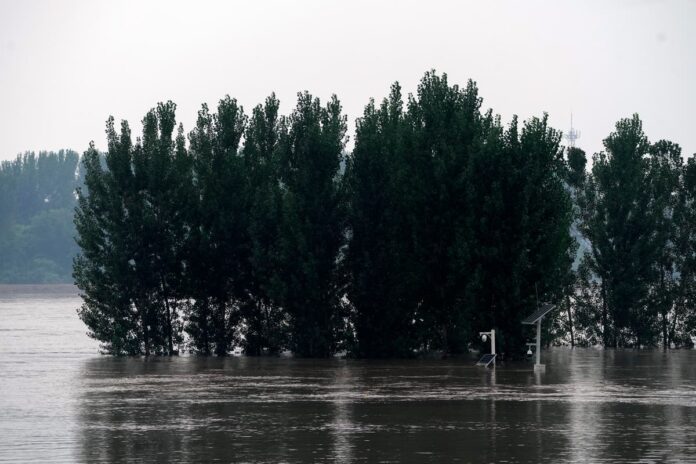A highway bridge in northern China collapsed due to flash floods triggered by heavy rains, and two cars fell into the river, state media reported Thursday, as parts of China are experiencing the worst floods in decades. There were no known casualties as of Thursday afternoon after a bridge across Mayi River collapsed along the Harbin-Mudanjiang Highway in Heilongjiang province, according to Beijing News. Images published by local media showed two badly damaged cars floating in the water. The bridge collapsed around 8:50 a.m. (0050 GMT) on Thursday, road authorities said. A rescue operation was ongoing, and a section of the highway had been closed, according to state media. China is seeing floods triggered by heavy rains in several parts of the country. Weather authorities said the capital, Beijing, recorded its heaviest rainfall in at least 140 years over the past few days as remnants of Typhoon Doksuri deluged the region, turning streets into canals where emergency crews used rubber boats to rescue stranded residents. A second rescuer was confirmed dead on Thursday in the Beijing area and the surrounding Hebei province, where the number of casualties rose to 22. Liu Jianmin, 47, was working with Blue Sky Rescue, a nongovernmental organization focused on relief efforts, when he fell into the water in Fozizhuang Township, according to the organization. His body was recovered later. Another rescuer was declared dead on Wednesday after the rubber boat she was in flipped over in a rapidly flowing river. One of the hardest hit areas was Zhuozhou, a small city in Hebei province bordering Beijing’s southwest. About 1,000 rescue workers were sent to the city, and more than 125,000 people were evacuated, according to state media. In Heilongjiang, where the highway bridge collapsed, water levels on the Mayi River exceeded safety levels by 50 centimeters (19.7 inches), indicating ongoing risks of floods. Meanwhile, in the eastern Shandong province, authorities also warned of flooding risks as water levels on the Zhangwei River continued to rise. China was largely spared by Typhoon Khanun, which on Thursday lashed Japan, damaging homes and knocking out power on Okinawa and other islands. China’s National Meteorological Center had initially expected the typhoon to make landfall in the southeastern Zhejiang province, where local authorities called ships into port and halted passenger ferry services. On Thursday afternoon, the center said the typhoon would bring strong winds and rain to the coast of Zhejiang through Thursday night and Friday morning but move back toward Japan overnight as its intensity would gradually weaken. Meanwhile, water supply was restored in Mentougou, a district of more than 260,000 people in western Beijing that had been badly affected by the floods, leading to the evacuation of thousands. Several organizations including Apple, food delivery app Meituan and China’s Red Cross Society on Thursday pledged donations to help with relief efforts in the Beijing area. ___ AP researchers Bing Yu and Wanqing Chen in Beijing contributed to this report.
Highway bridge in northern China collapses due to flash floods and casualties are unknown
Sourceindependent.co.uk
RELATED ARTICLES


